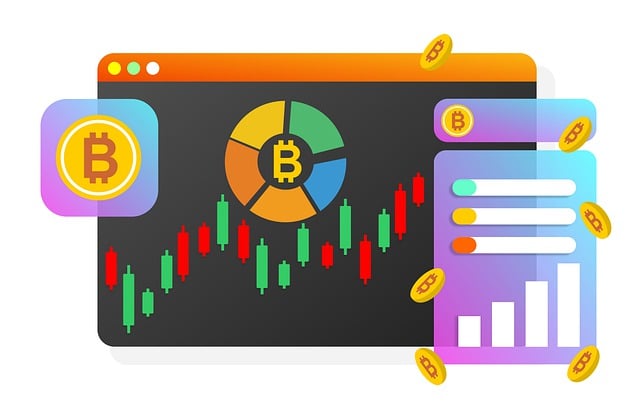The Impact of Inflation on Crypto Markets has transformed cryptocurrency dynamics, as investors increasingly turn to digital assets like Bitcoin as a hedge against inflation eroding traditional fiat currencies. This drives up demand and prices but also creates substantial volatility due to economic uncertainty and investor sentiment. To navigate this volatile market, investors should diversify portfolios, employ dynamic risk management, stay informed about regulatory changes, and focus on projects with strong fundamentals, thereby enhancing their ability to withstand price fluctuations in inflated crypto environments.
In an era where the impact of inflation on traditional markets is well-documented, the relationship between inflation and crypto markets remains a fascinating and evolving narrative. This article delves into the intricate link between rising inflation rates and cryptocurrency performance, exploring historical trends and their current implications. We provide insights into how investors can navigate these volatile environments, offering strategies to mitigate risks associated with inflated crypto spaces. Get ready to uncover the dynamics shaping digital asset investments.
- Understanding Inflation and Its Historical Relationship with Crypto Markets
- The Current Landscape: How Inflation is Affecting Cryptocurrencies
- Strategies for Investors to Navigate and Mitigate Risks in Inflated Crypto Environments
Understanding Inflation and Its Historical Relationship with Crypto Markets

In recent years, the concept of default has gained significant attention in financial circles, especially within the dynamic landscape of cryptocurrency markets. Understanding inflation and its historical relationship with these markets is crucial to gauging investment risks and opportunities. Inflation, a general rise in prices over time, has a profound impact on various economic indicators, including asset values. Historically, periods of high inflation have often been marked by volatility in traditional financial markets, and crypto assets are no exception.
The relationship between inflation and crypto markets is complex. On one hand, as inflation erodes the purchasing power of fiat currencies, investors may turn to cryptocurrencies as a hedge against currency devaluation. This can drive up demand for digital assets. Conversely, during times of economic uncertainty, investors might flee to safe-haven assets like Bitcoin, causing its price to surge. The historical correlation suggests that while crypto markets are not immune to inflation’s effects, they offer an alternative investment option with the potential to provide protection against traditional inflationary pressures.
The Current Landscape: How Inflation is Affecting Cryptocurrencies

In recent years, the current landscape of cryptocurrency has been significantly shaped by global economic shifts, with one paramount factor being inflation. The impact of inflation on crypto markets is profound; as traditional fiat currencies lose purchasing power, investors increasingly turn to digital assets like cryptocurrencies as a hedge against eroding value. This shift is driving up demand for certain cryptocurrencies, leading to price appreciation and creating new opportunities in the market.
However, inflation also poses substantial risks for cryptocurrencies. Many digital assets are highly volatile, and their speculative nature makes them susceptible to rapid price swings triggered by economic uncertainty or changes in investor sentiment. As inflation expectations rise, this volatility can intensify, potentially leading to significant losses for crypto investors. The dynamic interplay between these factors underscores the ever-changing nature of cryptocurrency markets in response to global economic conditions, particularly the impact of inflation.
Strategies for Investors to Navigate and Mitigate Risks in Inflated Crypto Environments

In the volatile realm of cryptocurrency, investors often face challenges posed by the unpredictable nature of these assets, especially during periods of heightened inflation. The impact of inflation on crypto markets can significantly alter investment strategies. To navigate this landscape, investors must adopt proactive measures to mitigate risks. Diversification is a key strategy; spreading investments across various cryptocurrencies and asset classes can reduce the blow from market downturns. Additionally, investors should focus on projects with strong fundamentals and real-world utility, ensuring that their holdings are not solely based on speculative trends.
Another effective approach is to employ dynamic risk management techniques. This involves setting clear stop-loss orders to limit potential losses and taking profits at opportune moments. Staying informed about market dynamics, following reputable news sources, and analyzing historical data can help investors make timely decisions. Furthermore, keeping an eye on regulatory changes and their implications on crypto markets is vital, as government interventions can drastically affect asset prices. By combining these strategies, investors can better withstand the fluctuations of inflated crypto environments.
